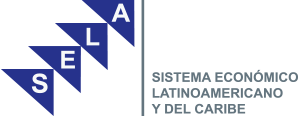ECLAC: NEW RECORD HIGH OF 173.361 BILLION DOLLARS OF FOREIGN DIRECT INVESTMENT RECEIVED BY THE REGION IN 2012
14 mayo 2013
Fuente: Taken from ECLAC Website
Fuente: Taken from ECLAC Website
Santiago, May 14- In 2012, Latin America and the Caribbean received a record 173.361 billion dollars of foreign direct investment (FDI) (6.7% more than in 2011), despite an external context characterized by shrinking FDI flows worldwide, according to the United Nations Economic Commission for Latin America and the Caribbean (ECLAC).
The figures are attributable to the region's steady economic growth, high prices for raw materials and the impressive returns on investments related to natural resource exploitation, according to the report Foreign Direct Investment in Latin America and the Caribbean 2012, which was launched at the Commission's headquarters in Santiago, Chile.
ECLAC predicts that this year's FDI inflows to the region will range between a fall of 3% and a rise of 7%.
According to the Executive Secretary of ECLAC, Alicia Bárcena "The foreign direct investment results attest to the good current performance of the Latin American economy. However, we see no clear signs of FDI making a relevant contribution to generating new sectors or creating activities with a high technology content - as changing the production structure is one of the main challenges facing the region".
The report describes FDI as increasingly focused on the exploitation of natural resources, particularly in South America. Manufacturing represents a fairly low proportion of inward FDI (except in Brazil and Mexico).
In addition, the profits of transnational enterprises operating in Latin America and the Caribbean (also known as FID income) grew fivefold in nine years, rising from 20.425 billion dollars in 2002 to 113.067 billion dollars in 2011. On average, transnational enterprises were repatriating a slightly higher proportion of profits to their parent companies (55%) than they were investing in the countries of the region where they were generated (45%).
The dramatic surge in these profits tends to neutralize the positive effect of FDI inflows on the balance of payments, according to ECLAC. Between 2006 and 2011, FDI income in the region averaged out at 92.000 billion dollars per year (92% of the value of FDI inflows over the same period).
Brazil remains the main recipient of FDI, despite the slight 2% decrease recorded in 2012, when it received 65.272 billion dollars - or 41% of regional inflows. In 2012, the largest increases were represented by Peru (which received 12.240 billion dollars) and Chile (30.323 billion dollars), making the latter the second largest recipient of FDI.
Other countries that posted higher figures than in 2011 were Argentina (27%), Paraguay (27%), Bolivia (23%), Colombia (18%) and Uruguay (8%). In Central America, the most striking results were El Salvador (34%), Guatemala (18%), Costa Rica (5%), Honduras (4%) and Panama (10%) (which remains the subregion's main recipient).
Mexico's figures were much lower than in 2011, and this is largely attributable to the 4.100 billion dollar flotation of 25% of the subsidiary of Spain's Santander bank. Other countries that experienced falls in 2012 were Ecuador, Venezuela and Nicaragua.
FDI inflows to the Caribbean rose for the third year in a row, but failed to reach the record levels of 2008. The main recipient is the Dominican Republic, with inflows swelling by 59% in 2012.
United States and European Union countries remain the main investors in Latin America and the Caribbean, with Canada and Japan also making significant contributions. Having said that, 2012 saw a dramatic rise in the proportion of FDI from the region's own countries (14% of the total). A high percentage of the investment received cannot be attributed to any particular economy because of the increasingly common practice of transnationals channelling their investment abroad through subsidiaries in third countries.
The ECLAC report also makes an initial estimate of the effect of FDI on labour markets, based on the number of jobs directly created by investments in expanding production capacity. Trade and construction activities create the most jobs (seven jobs for every million dollars invested), followed by manufacturing and services (three jobs). Mining activities (including oil) create one job per two million dollars.
ECLAC highlights the consolidation of the growth process of Latin American transnational enterprises (trans-Latins), during a year in which many have controlled or acquired shares in European companies as they expand into Europe and other markets.
Outward direct investment by Latin American and Caribbean countries abroad grew by 17% between 2011 and 2012, to reach 48.704 billion dollars. This is 2% higher than the record reached in 2010. In the past decade, most investments came from Brazil, Chile, Colombia and Mexico, while in 2012 they came almost exclusively from Mexico and Chile.
For the first time, the report also analyses FDI flows to Latin America's agricultural sector, which plays a strategic role in the demographic and climate challenges facing the region.
The report concludes "It is therefore increasingly necessary to tap the region's advantages as an FDI destination to improve the countries' production matrices. This could be achieved by making greater efforts to channel part of the profits from transnationals into funds for production development and by pursuing initiatives to direct FDI towards sectors which the countries view as priorities".








